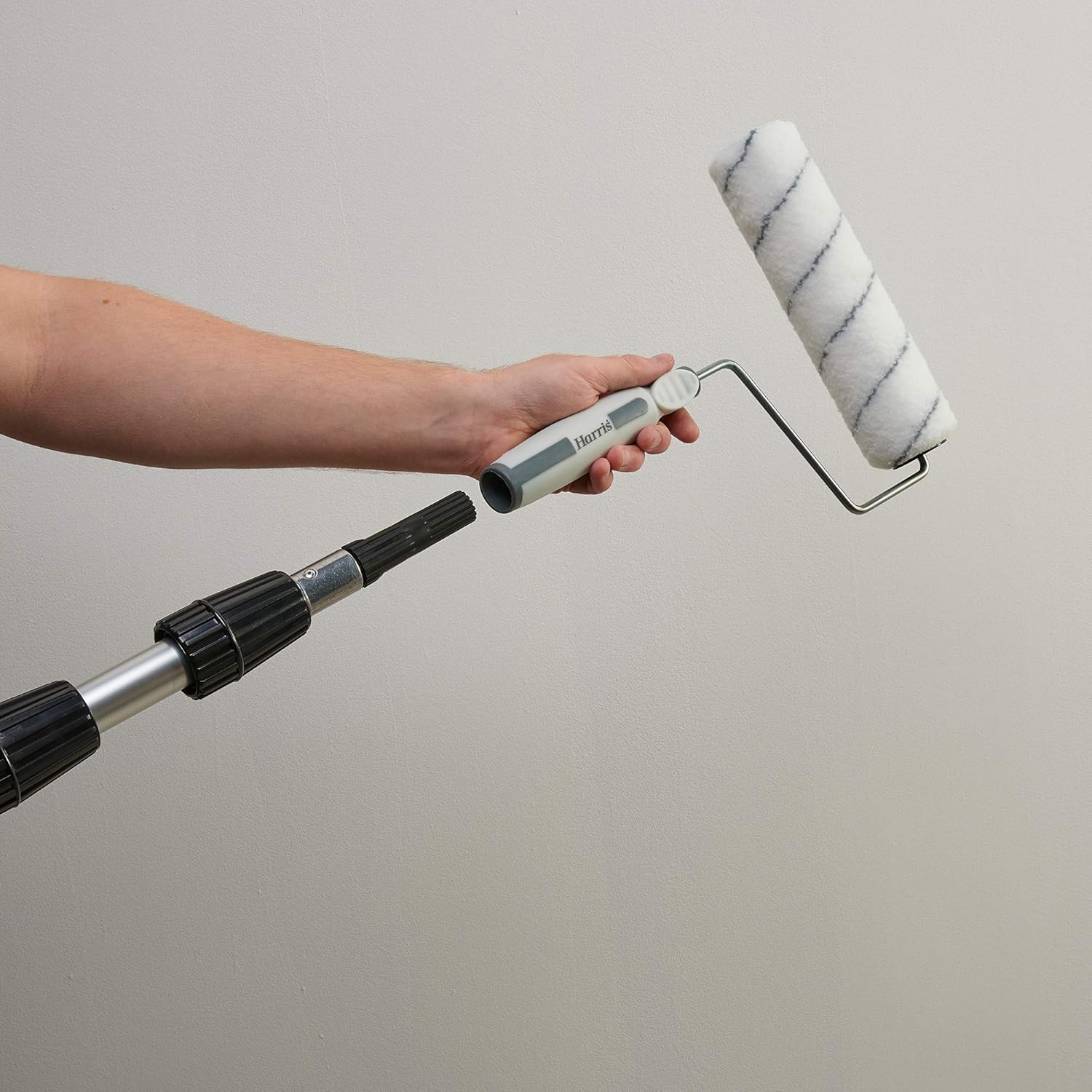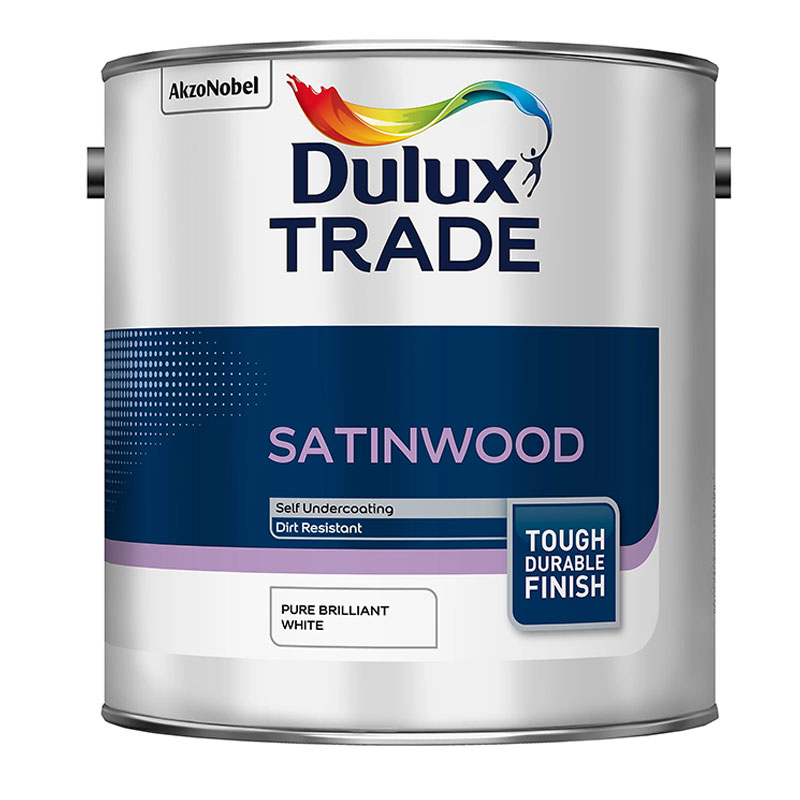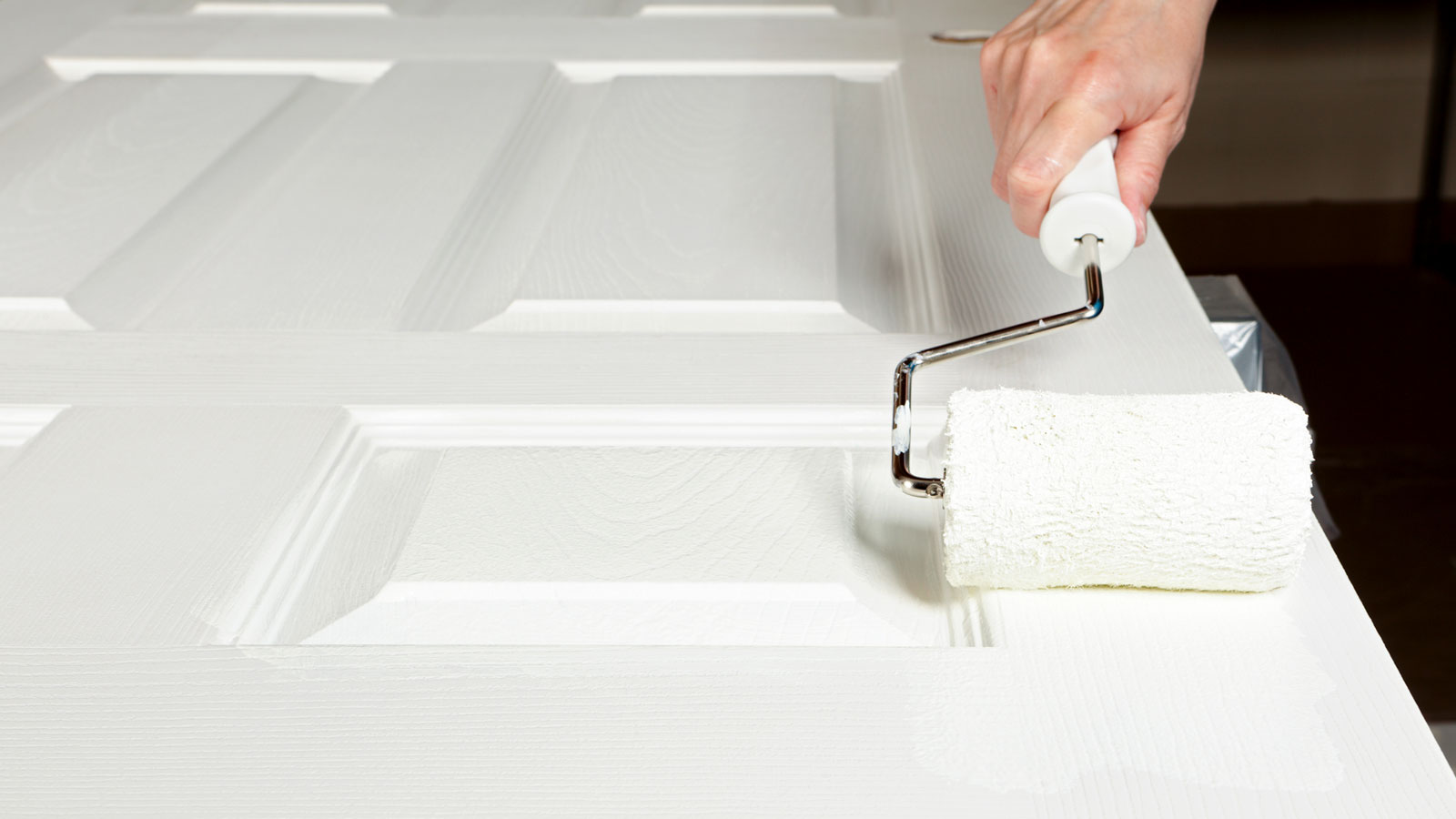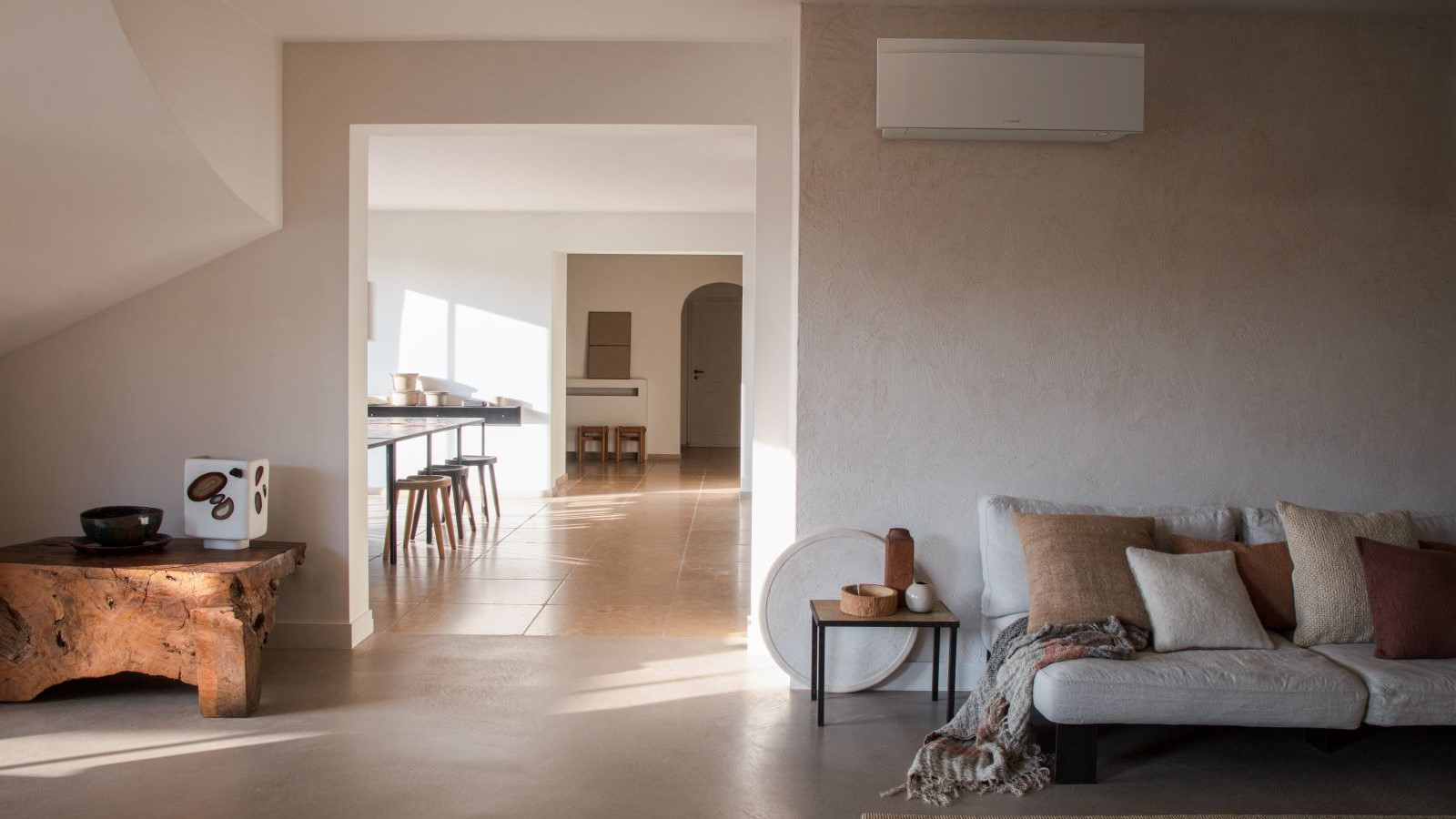Thinking of painting a hallway? Try these smart, practical and colour-friendly tips to elevate your entrance
Get expert advice on how to prepare, paint, and choose the best colours to give your hallway the wow factor

Painting a hallway not only needs to be a stylish solution, it also needs to be a practical one. As the entrance to your home it can see a lot of action. Choosing the right colours will set the tone for the rest of your home, but getting your preparation and painting right is just as important.
Knowing how to paint a room or hallway the right way will make sure you get a good pro looking finish. And just importantly it will leave you with a durable wipeable finish that will help it to stay looking good.

Jimmy is the Senior Brand Manager at Ronseal, the UK's number one woodcare brand. Jimmy regularly provides insights and guidance on how to properly prepare wood for treatment, as well as handy tips and hints for decorating and general woodcare projects.
Painting a hallway: What order should I paint?
The general rule for paint projects is to start at the top and work your way down. Jimmy Englezos, DIY expert and senior brand manager at Ronseal, shares the first step before any painting begins: “It's generally best to start with prepping your woodwork, before applying paint to anything.”
He adds, “Put down a dust sheet and ensure you have good ventilation with an open window. Fill any holes or cracks that need addressing with wood filler, then sand the woodwork with 120-grit sandpaper, before wiping the wood clean with white spirit and leaving it to dry.”
Once the woodwork is prepped and ready to go, start prepping the ceiling and walls. Once all areas are paint-ready, Englezos says, “I’d recommend starting your home decorating tasks from the ceiling and working your way down to floor level.”
So to summarise, start with the ceiling, followed by walls and then finish with doors, windows and skirting boards.
Some painters like to paint woodwork first, then mask off the trim with painters' tape, and finish with the walls. This helps create neat lines where needed, and if a mistake is made, it's easy to wipe off the emulsion. But this order typically takes longer as satin, gloss paints, etc take longer to dry than emulsion.
Try these to paint a hallway

A lightweight, strong and sturdy aluminium three-stage extension pole for rollers. Ideal for reaching ceilings and walls. Extends to a maximum length of 3 metres.

A high-quality, pigment-rich matt emulsion paint formulated for walls and ceilings. A soft mid green with balanced blue and grey undertones, it is scrubbable and stain-resistant.

An oil-based trade paint that features a subtle satin sheen and a durable and washable finish. It has a coverage of 17m2 and is touch dry within four hours, and dry within 16-24 hours.
Prep and paint ceilings and walls
Prepare ceilings and walls
To prepare walls for painting, start by brushing down the ceiling and walls with a stiff brush to remove cobwebs and any debris. Wash down with sugar soap if the ceiling or walls haven't been cleaned for a long while. Englezos says the next step is to “Address any holes or hairline cracks in your walls by using wall filler and sanding down.” A fine sandpaper grade - 120 -180 grit is good. Use a sander head like this GoodHome Sander head from B&Q and an extension pole for a quicker and easier job.
Bring your dream home to life with expert advice, how to guides and design inspiration. Sign up for our newsletter and get two free tickets to a Homebuilding & Renovating Show near you.
Englezos adds, “For walls and ceilings that have been previously painted, sand off any loose or flaking paint before wiping with a microfibre cloth or handheld vacuum to remove dust and dirt.”
Finally, mask off any light fittings, light switches, and power sockets to prevent paint from getting onto them. One tip is to unscrew the fitting slightly, add tape to the edges, tuck it in, and then tighten the fitting back up.

With a passion for all things creative, colour expert Bailey Oates brings a wealth of expertise to the eco-friendly paint company Earthborn. Holding a BA Hons in Spatial Design from Liverpool John Moore’s University, Bailey’s keen eye for colour and design shines through in everything she does.
Paint ceilings and walls
When painting a ceiling, start with a two or three-inch brush and go around the edges of the ceiling and light fittings to create a border approximately three inches wide.
Next, you need to paint the remaining ceiling. Bailey Oates, Colour Expert at Earthborn, offers a few options: “You can apply paint with a brush, roller or spray.” She adds, “The method of application will affect the finished texture of the walls. For example, a roller will give more texture, and a spray will give the least texture. Most people find that a short pile roller provides the best finish overall.”
You may need different sizes depending on the complexity of the ceiling, as Englezos explains, “For a regular-sized wall, a 9-inch roller should work fine; smaller rollers are better for unusual shapes, such as a curved alcove or tight spots, while larger models will cover the area much quicker but can be harder to control.”
Once the ceiling is dry, you can apply the same principle to the walls. Cut in around the top of the wall to create a neat dividing line – if using a different colour. Now create a border around the top of the wall, in the corners, and along the skirting boards.
Now get a roller (like this Harris Revive Polyester 9" Medium pile Roller set) – use an extension pole to make it easier. Start in a top corner, creating a strip from the skirting board to the ceiling using a V/W pattern to spread the paint and fill the gaps accordingly. When finished, go back over with the roller using a light touch (known as laying off).
Prep and paint doors, windows and skirting boards
Prep paintwork
If needed, wash down the old paint with sugar soap, then wash down with a damp cloth and wipe dry. Add painters tape like this Frog Tape Yellow Delicate Surface Painters Masking Tape from Amazon to protect paint and help get straight edges. Now get a fine grade sandpaper – 180 grit is good – and rub down the woodwork. Wipe down the woodwork to get rid of dust with a damp cloth and leave to dry.
Paint woodwork and trim
Start the painting process with a primer if painting bare wood and an undercoat if painting previously painted wood. If painting a door frame do this before you paint a door. Typically painting windows is next, start at the top and work downwards and finish by painting the sill.
The last job is painting skirting boards, this helps ensure that no dust is kicked up onto the skirting boards when painting doors and windows. If painting skirting boards with carpet make sure to lay down a double depth of painters tape and make sure the edge is tucked in to stop it getting on carpet edges.

How to paint a hallway with stairs
If you are painting a stairwell at the same time as the hallway, you are going to need some help to reach the high ceilings and walls. The traditional way is to place a ladder against the high wall and a plank/board through a rung and onto a stair step. But a lot of DIYers don't have suitable planks or boards.
The alternative is to use a combination ladder like this 4.7M Multi-purpose Aluminium Folding Extendable Ladder from Amazon. This can be fixed into various configurations to help reach high ceilings and tops of walls.
But you still need a head for heights. If ladders are not your thing you can stand on your landing to reach. Use a sander head and an extension pole to prep the walls. To cut in at the top of the walls try a paint pad on an extension pole. To finish, use a nine inch roller on an extension pole.
Best colours to paint a hallway
Paul Hodgetts is the Director Of Colour for Rust-Oleum Europe. Having worked in the Paint industry for over 40 years, he is passionate about providing experience driven and proven colour solutions to support product brands for Rust-Oleum and other partner brands such as Zinsser, Blackfriar, Bollom, Watco and TOR Coatings across Europe.
Should a narrow hallway be painted in a dark or light colour? Paul Hodgetts, Director of Colour at Rust-Oleum, offers insight into what works: “The amount of natural light in a hallway plays a huge role in how colours will look and feel in the space.”
He adds, “In darker or windowless hallways, deep shades can make the area feel enclosed, so it’s usually best to lean towards lighter tones that reflect as much light as possible. Soft neutrals, off-whites, and gentle pastels can instantly lift and brighten the space, helping it feel more inviting.”
However, it's not just the amount of natural light in a hallway to consider, as Hodgetts shares, “The proportions of your hallway are just as important. Narrow or compact hallways benefit from airy shades such as pale greys, warm whites, and subtle pastel tones, which can create an illusion of width and openness.”
If a hallway has limited natural light, Hodgetts suggests a classic colour, “White remains a timeless and popular choice for hallways, and for good reason. It instantly brightens spaces with limited natural light, making even narrow or compact hallways feel more open and airy.”
He adds, “White also has the advantage of being incredibly versatile; it blends effortlessly with all styles of furniture and soft furnishings, while creating a seamless transition into adjoining rooms regardless of their colour palette.”
Colours to avoid in a hallway
Colour choice is subjective, but as a general rule, Hodgetts says, "It’s generally best to avoid very dark or heavy shades, such as deep browns, charcoals, or blacks, particularly if the space is narrow or lacks natural light. These colours can absorb light, making the hallway feel more enclosed and even smaller than it is."
He adds, "Strong, overpowering shades like intense reds or neons can also feel overwhelming in what is often a transitional space, creating a jarring effect rather than a welcoming flow."
However, this doesn't mean you can't use dark colours, continues Hodgetts, "It doesn’t mean dark or bold colours are completely off-limits; they can work beautifully if you have a generously sized hallway with good natural light, or if used as an accent." He adds, "But as a rule of thumb, lighter, softer, and more versatile tones tend to be the safest choice for keeping hallways bright, spacious, and inviting."
Make the most of your hallway makeover with these 7 creative hallway storage ideas for a tidy entryway, Hallway decor ideas to make the best first impression and 13 hallway flooring ideas for an impactful entranceway.
Steve Jenkins is a freelance content creator with over two decades of experience working in digital and print and was previously the DIY content editor for Homebuilding & Renovating.
He is a keen DIYer with over 20 years of experience in transforming and renovating the many homes he has lived in. He specialises in painting and decorating, but has a wide range of skills gleaned from working in the building trade for around 10 years and spending time at night school learning how to plaster and plumb.
He has fitted kitchens, tiled bathrooms and kitchens, laid many floors, built partition walls, plastered walls, plumbed in bathrooms, worked on loft conversions and much more. And when he's not sure how to tackle a DIY project he has a wide network of friends – including plumbers, gas engineers, tilers, carpenters, painters and decorators, electricians and builders – in the trade to call upon.

